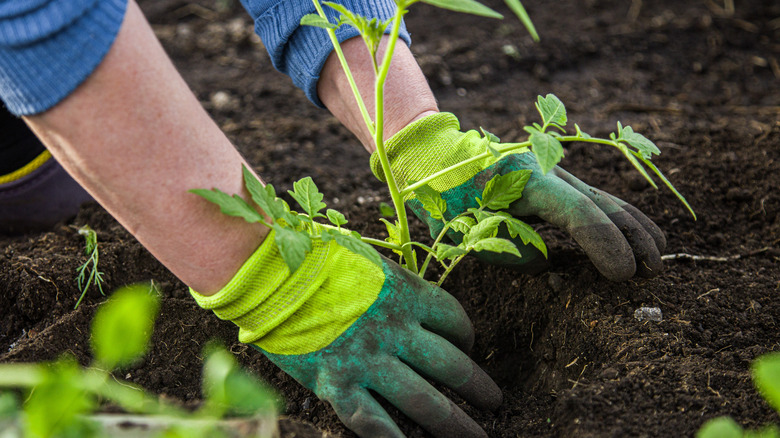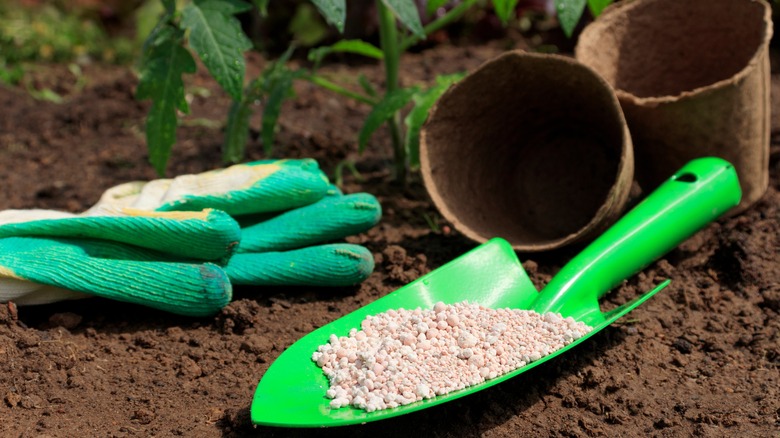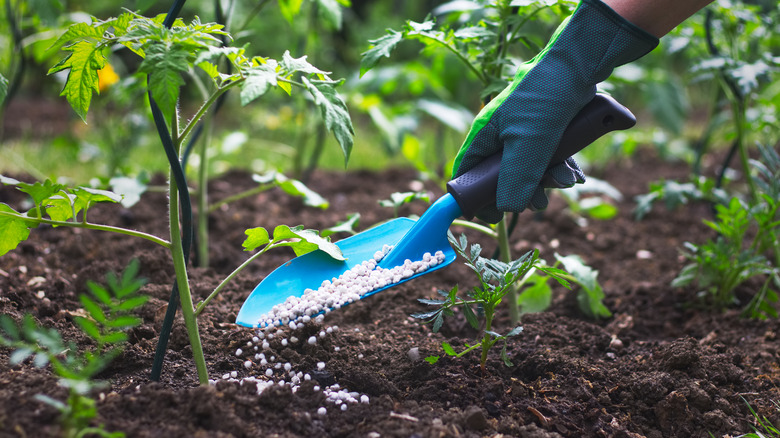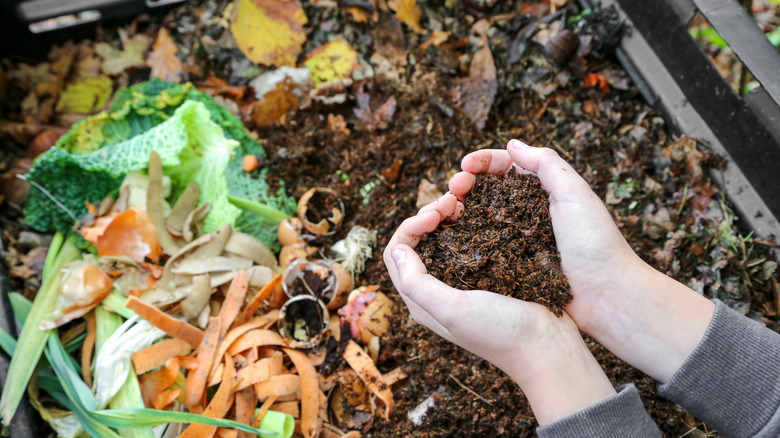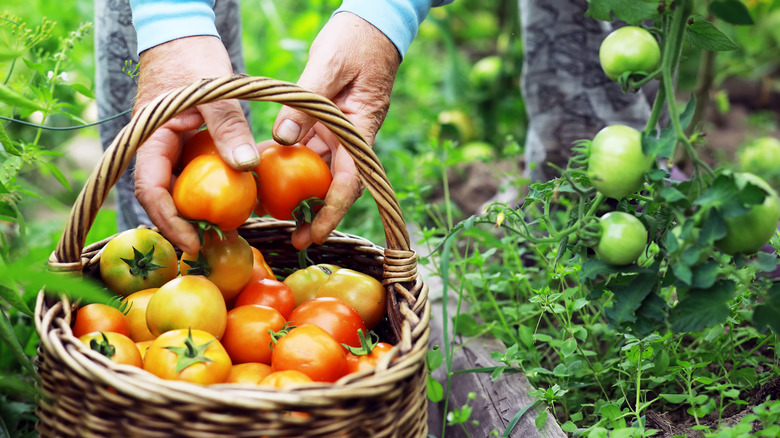How To Determine The Best Fertilizer For Healthy Tomatoes
We may receive a commission on purchases made from links.
Whether you like to preserve tomatoes or just enjoy them sliced on your sandwiches and salads, nothing beats homegrown. To grow healthy, productive tomato plants, you need the right balance of nutrients in the soil, which means choosing the correct fertilizer. Most commercial fertilizers provide the three primary nutrients used by plants, also known as macronutrients: nitrogen, phosphorous, and potassium. But to grow the best tomatoes, micronutrients like calcium and magnesium not only help the plant thrive, they also help prevent diseases like blossom end rot.
Before you add fertilizer, it's best to get a soil test, and you can buy DIY kits at garden centers. To get the most detailed results, contact your local extension service. Many of these offices offer free or inexpensive soil tests and can help interpret the results so you know exactly what nutrients your soil is lacking. Whether you get a soil test or not, here is what you need to consider when selecting the best fertilizer for your tomatoes.
Macronutrients
When you see a package of fertilizer with three numbers on the label, like 10-10-10, those numbers refer to the ratio of nitrogen, phosphorous, and potassium in each application. For example, if you see a bag with 5-10-8, that means it is 5 parts nitrogen, 10 parts phosphorous, and 8 parts potassium. This is a good ratio for garden soil that is already high in nitrogen (based on a soil test) as well as for nitrogen-fixing plants like legumes that take nitrogen from the air as well as the soil.
Nitrogen is the primary nutrient responsible for growing strong stems and big bushy leaves for photosynthesis. Since this is important to the health of a plant, it may be tempting to over-fertilize with nitrogen, but more is not always better. Too much nitrogen in the soil can grow lush plants that produce very little fruit. Instead, look for a tomato-specific fertilizer like Espoma Organic Tomato-tone which offers 3 parts nitrogen, 4 parts phosphorus, and 6 parts potassium. The higher potassium levels in this fertilizer help the plant produce plenty of healthy fruits.
Micronutrients
Although micronutrients are not listed as numbers on the front of a bag of fertilizer, they are still vital to the health of a plant. Many synthetic all-purpose fertilizers contain only the three primary macronutrients, so when selecting the best fertilizer for your tomatoes, read the bag to see if there are additional nutrients listed. Think of shopping for fertilizer like shopping for vitamins. You wouldn't purchase a multivitamin that has only vitamins C, D, and zinc. While those are all essential nutrients, there are many other vitamins and minerals your body needs to thrive.
The best tomato fertilizers include calcium, magnesium, and sulfur, although some options have more than just nutrients. For example, the Espoma Tomato-tone not only includes macronutrients and micronutrients, it also has beneficial bacteria to help boost the biological activity in your soil. These types of bacteria are like a soil-based version of probiotics. Whereas probiotics help your body digest food more efficiently, these beneficial soil bacteria make nutrients more readily available and easier to absorb by plant roots.
Compost
As you prepare your garden for planting tomatoes, consider adding compost in addition to fertilizer. While fertilizer is like giving vitamins to your plants, compost is more like adding food to the soil. There's no exact standard for the amount of nutrients in compost, but it offers even more micronutrients than most fertilizers, which increases the nutritional value of the food you grow.
Besides providing nutrients to your plants, there are many benefits of adding compost to your garden each season. In raised beds, containers, and in-ground gardens alike, compost helps keep the soil loose while retaining moisture and nutrients. In less-than-ideal soil conditions like dense clay or sand, amending with compost can vastly improve the overall soil structure. This amendment can also help balance the acidity level in your garden. Some plants, such as blueberries, like extra acidity, but most plants thrive in just slightly acidic conditions. Regardless of whether your soil is too alkaline or too acidic, amending with compost can help balance it out.
How to fertilize your tomato plants
Sure, you can add either compost or fertilizer to your garden, but using both is the best way to grow healthy tomatoes. Before you plant, top-dress your in-ground garden by adding 1 or 2 inches of compost to the surface of your soil and work it into the ground with a tiller or shovel. If you're creating a soil mix for raised beds or containers, there are many opinions about the right ratio of compost to soil, but a simple and inexpensive method is to use equal parts topsoil, compost, and peat moss.
After your garden is prepared and the soil is warm enough, transfer your tomato plants into the ground. The bag of fertilizer will have instructions on the amount to use when you first plant as well as how much to use and how often to fertilize throughout the growing season. Again, this is not a situation where 'if some is good, more is better.' Over-fertilization can create an imbalance of nutrients in your soil, and once they're in there, it's hard to get them out. Follow the instructions on the bag and enjoy your harvest of healthy, thriving tomatoes.
